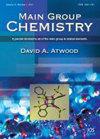Investigating the Efficiency of Photo-Fenton (UV/H2O2/Fe2+) in Removing the Indomethacin Antibiotic From Aqueous Solutions
IF 1.3
4区 化学
Q3 CHEMISTRY, MULTIDISCIPLINARY
引用次数: 0
Abstract
Water pollution caused by antibiotics is one of the major challenges in the world today. The current research aims to investigate the effect of the Photo-Fenton process in removing indomethacin antibiotics from aqueous solutions. This experiment-based study was conducted on a laboratory scale and discontinuous manner. The influential variables affecting the removal efficiency of indomethacin include initial antibiotic concentration, pH, time, hydrogen peroxide concentration, and iron ion. The study was conducted base on standard methods (APHA, AWWA, CFWP, 2005). The Design Expert software was used to analyze the effect of independent variables on the removal efficiency of indomethacin antibiotics in the Photo-Fenton process (UV/H2O2/Fe2+) using response surface methodology (RSM) and central composite design (CCD). To ensure the repeatability of the results, each experiment was repeated three times and the reported the average. The results showed that the optimal removal conditions for indomethacin antibiotics were pH = 4, H2O2 oxidant concentration = 50 ppm, Fe2+catalyst concentration = 50 ppm, time = 75 minutes, and initial antibiotic concentration = 20 ppm, with a removal efficiency of 91.03% . The variables of initial antibiotic concentration, H2O2 concentration, and pH had the greatest impact on the removal efficiency of indomethacin. The results of this study indicate that under optimal conditions, more than 90% of indomethacin antibiotics can be removed from aqueous solutions using the Photo-Fenton process, which is a significant result for removing this pharmaceutical pollutant from aquatic environments.研究光-芬顿(紫外线/H2O2/Fe2+)去除水溶液中吲哚美辛抗生素的效率
抗生素造成的水污染是当今世界面临的主要挑战之一。目前的研究旨在探讨光-芬顿工艺从水溶液中去除吲哚美辛抗生素的效果。这项基于实验的研究是在实验室范围内以不连续的方式进行的。影响吲哚美辛去除效率的变量包括初始抗生素浓度、pH 值、时间、过氧化氢浓度和铁离子。研究根据标准方法(APHA、AWWA、CFWP,2005 年)进行。使用 Design Expert 软件,采用响应面法(RSM)和中心复合设计(CCD)分析了自变量对光-芬顿工艺(紫外线/H2O2/Fe2+)中吲哚美辛抗生素去除效率的影响。为确保结果的可重复性,每个实验重复三次,并报告平均值。结果表明,吲哚美辛抗生素的最佳去除条件为 pH = 4、H2O2 氧化剂浓度 = 50 ppm、Fe2+催化剂浓度 = 50 ppm、时间 = 75 分钟、初始抗生素浓度 = 20 ppm,去除率为 91.03%。初始抗生素浓度、H2O2 浓度和 pH 值对吲哚美辛的去除率影响最大。该研究结果表明,在最佳条件下,利用光-芬顿工艺可以从水溶液中去除 90% 以上的吲哚美辛抗生素,这对于去除水生环境中的这种药物污染物来说是一项重大成果。
本文章由计算机程序翻译,如有差异,请以英文原文为准。
求助全文
约1分钟内获得全文
求助全文
来源期刊

Main Group Chemistry
化学-化学综合
CiteScore
2.00
自引率
26.70%
发文量
65
审稿时长
>12 weeks
期刊介绍:
Main Group Chemistry is intended to be a primary resource for all chemistry, engineering, biological, and materials researchers in both academia and in industry with an interest in the elements from the groups 1, 2, 12–18, lanthanides and actinides. The journal is committed to maintaining a high standard for its publications. This will be ensured by a rigorous peer-review process with most articles being reviewed by at least one editorial board member. Additionally, all manuscripts will be proofread and corrected by a dedicated copy editor located at the University of Kentucky.
 求助内容:
求助内容: 应助结果提醒方式:
应助结果提醒方式:


